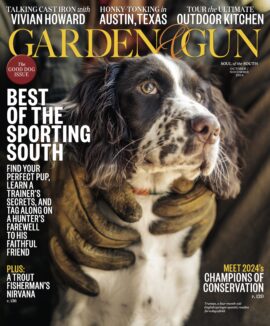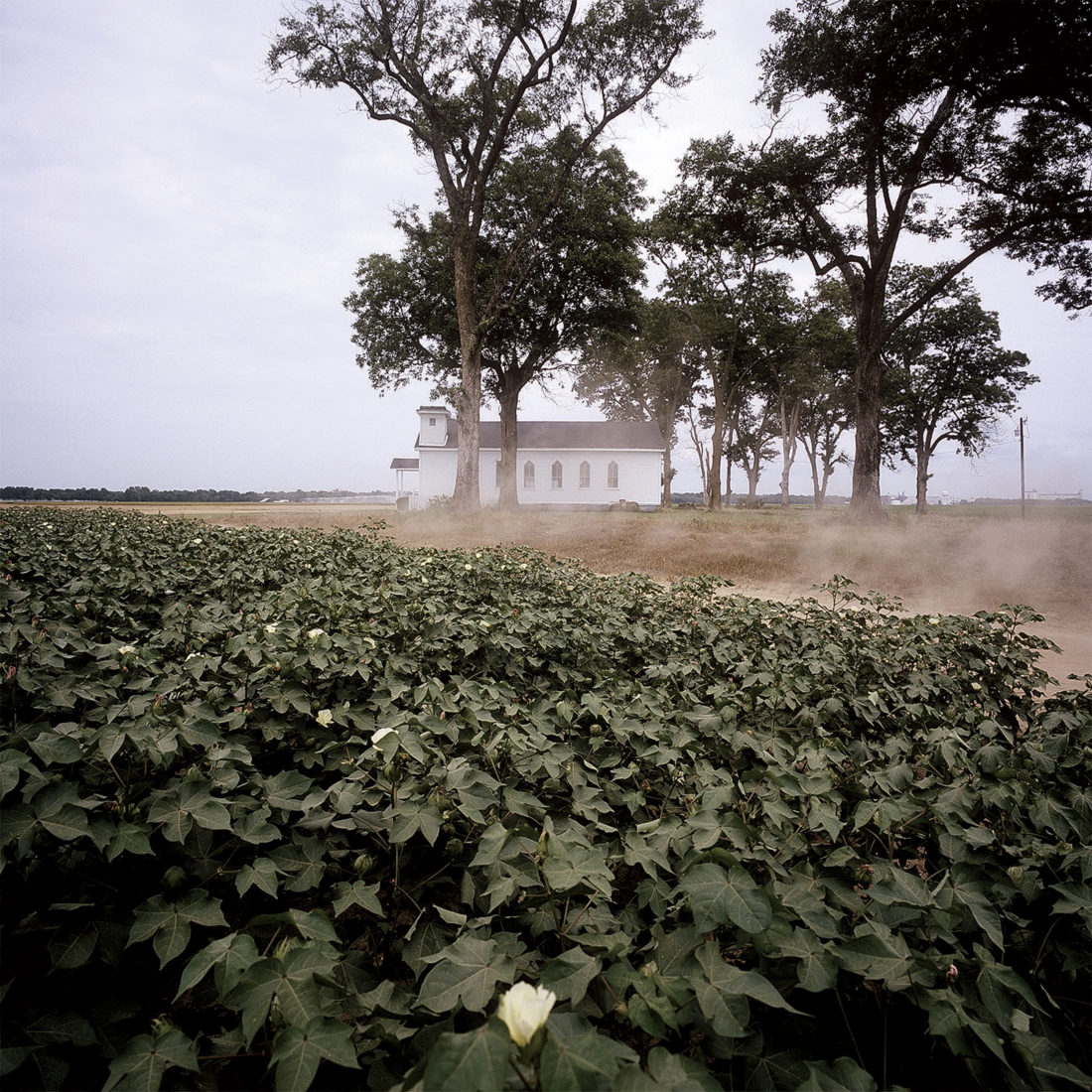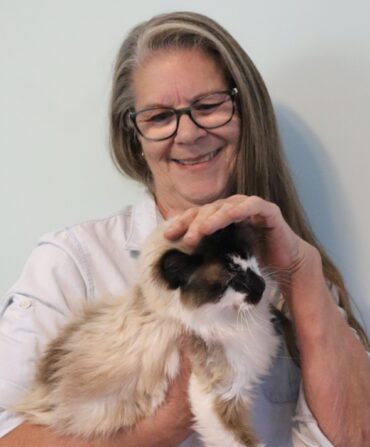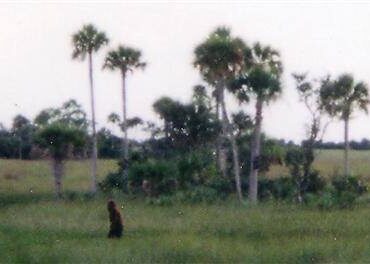The blackbirds came at dusk when Kathleen Robbins lived at Belle Chase. They roosted in the canebrake by the noisy thousands. They carpeted the family farm with droppings. But in flight they were magnificent, a winter spectacle of fluttering bodies merging into a pointillist streak across the sky.
As a child, Robbins spent countless hours at Belle Chase, the 2,300 acres in Tallahatchie County, Mississippi, where her family farmed cotton for more than a century. The artist returned as an adult in 2001 after completing graduate studies in New Mexico and lived with her brother on the farm for nearly two years, reinhabiting family properties that had been empty for decades. Although it would be five more years before she made Belle Chase the subject of her art, those days living in her great-great-grandparents’ sagging Victorian clearly influenced Into the Flatland, a series of moving photographs that document the life and culture of the Mississippi Delta.
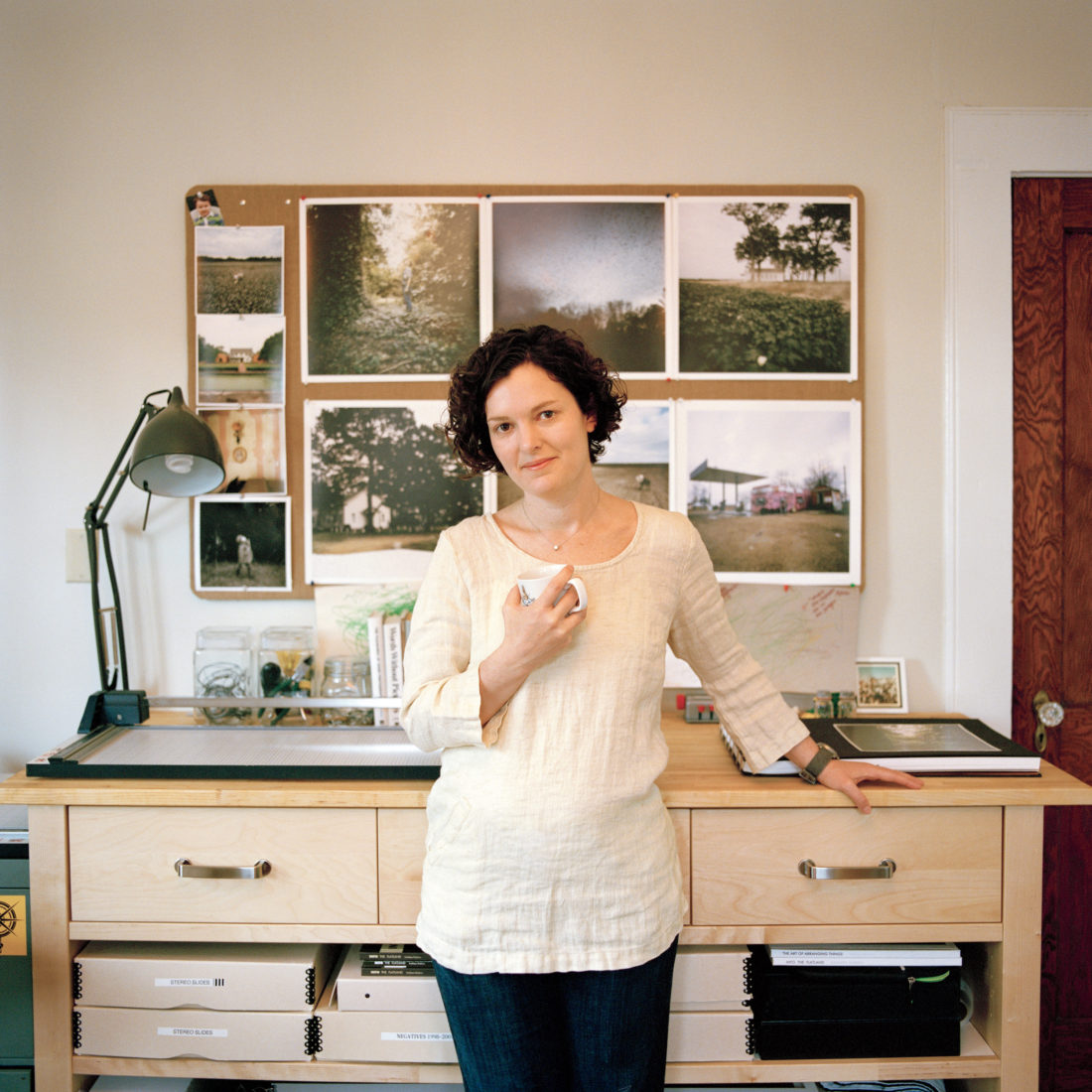
Photo: Meg Griffiths
Delta Connection
Kathleen Robbins in her home studio in downtown Columbia, South Carolina
Currently on view at the University of Mississippi Museum in Oxford through August 3, and set to be published as a book in spring 2014, the collection features around forty images shot on—or very near—Belle Chase, including “Blackbirds,” inspired by the familiar sight of an evening sky clouded by wings. “She is clearly a native daughter,” says museum director Robert Saarnio. “These are images captured by someone who knows this land intimately.”
Robbins’s photographs, which have also appeared at the RayKo Photo Center in San Francisco and at the Ogden Museum of Southern Art in New Orleans, are lyrical, mournful, and occasionally dark. They belong to the wide-format photographic tradition of Walker Evans and explore a deeply personal vision of the South that recalls Alabama’s William Christenberry.
“When I was there, living on the farm, I was very connected to something else,” says Robbins, who moved to Columbia in 2003 to teach art and photography at the University of South Carolina. Perhaps it’s little wonder, then, that Into the Flatland contemplates the significance of belonging to a particular piece of earth—and what it means to leave.
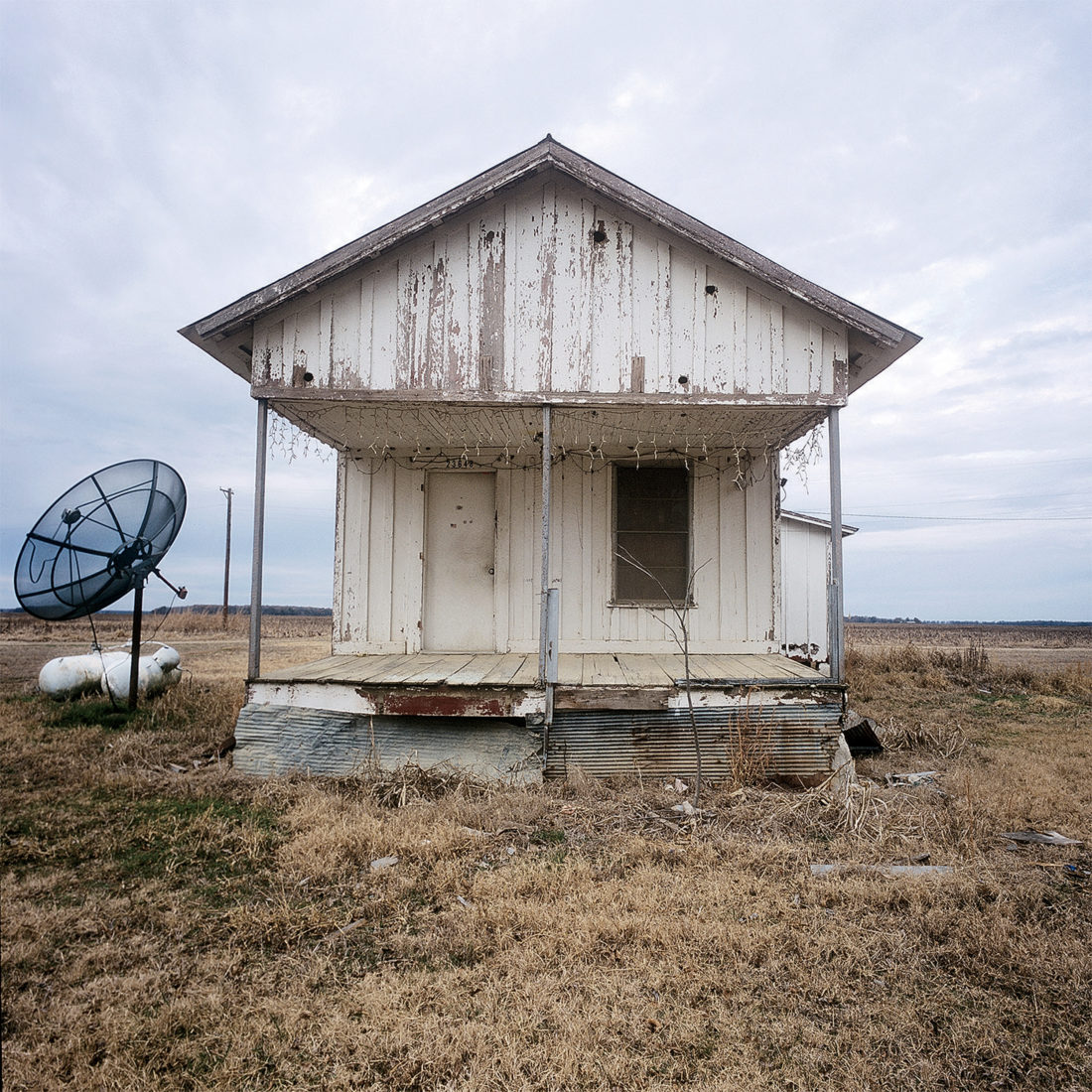
Consider “Little Steele (Christmas Day),” which depicts Robbins’s young nephew standing in a fallow field and grasping a pair of deer antlers. Taken on a holiday trip home in 2006, it was the image that persuaded Robbins to turn her camera on her family’s complex relationship with Belle Chase. “Part of it, of that initial portrait, is that sense of being swallowed up,” she says. “All of these thoughts of wanting to live here and not wanting to live here at the same time, of what it really means to live in the very rural South. There are romantic parts, but it’s also very difficult and can be lonely.”
Robbins’s landscapes feel lonelier still: a white church behind a cloud of dust in “Brooklyn Chapel,” a dirt grave marked by a flimsy fence in “Gravesite at Ryles Chapel.” Their spare composition owes much to Robbins’s grandmother, a painter named Jessye Roberson who, along with her husband, B. J., was the last to live permanently at Belle Chase. Roberson took hundreds of Polaroids to use as studies, and it’s easy to see how that vision inspired her granddaughter’s eye and style: a fine arts version of the family snapshot.
Robbins uses a Hasselblad camera with a 38-millimeter lens, which produces large, exceptionally wide and sharp prints. Stand in front of one, and it’s almost as if you’re at Belle Chase, too, trying to decide whether to stay forever or run from its magnetic pull. “My grandmother used to talk about being possessed by a place as much as you possess it,” Robbins says. “It’s so difficult to come to terms with what it means to be there. Standing in that landscape, you experience all that conflicted emotion profoundly.”
For more information on the exhibit, visit museum.olemiss.edu

